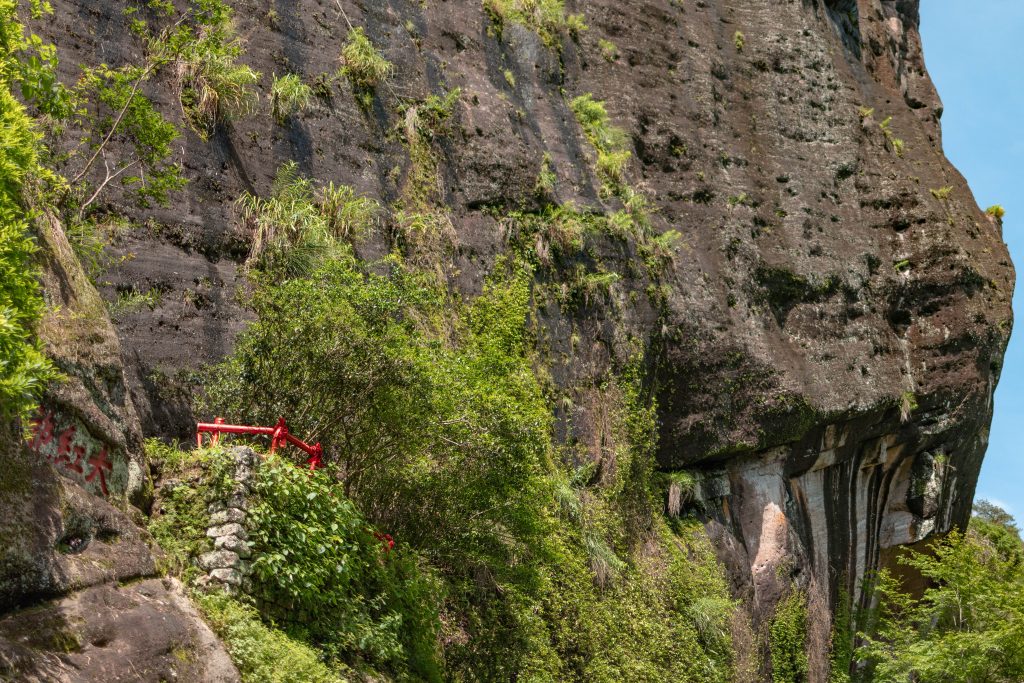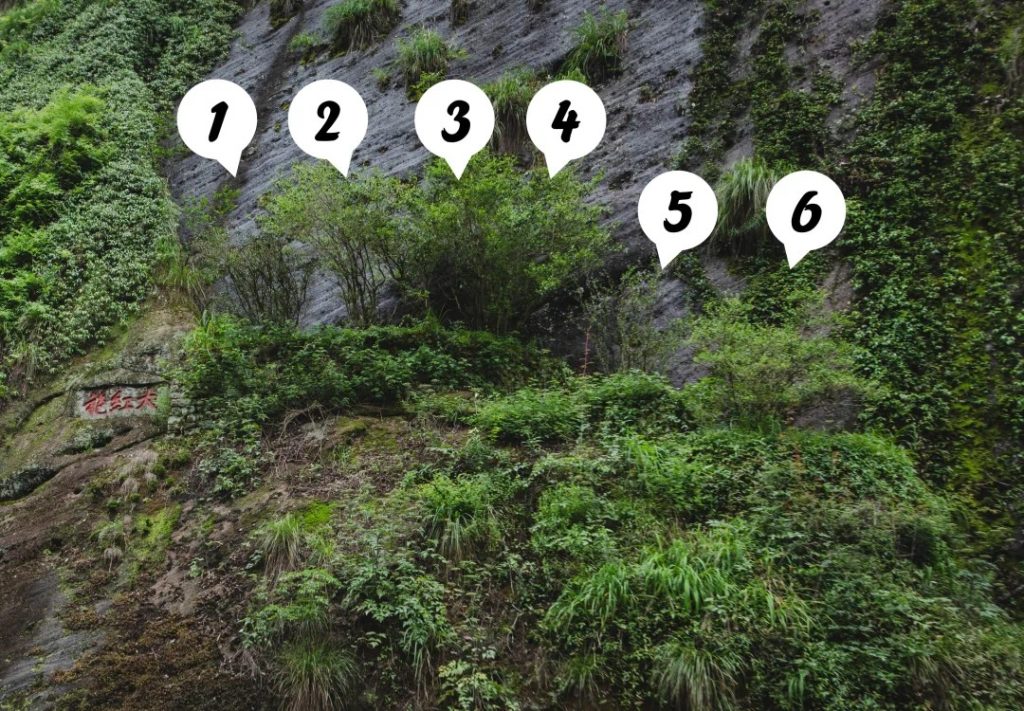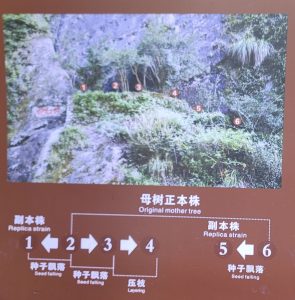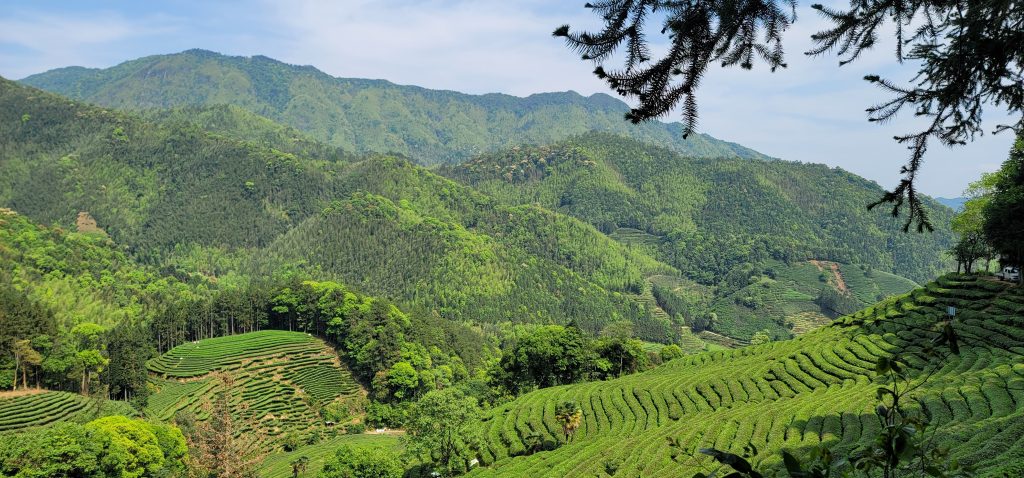$16.00 – $45.00
Cupping Mr. Wu's version of Big Red Robe is the luxurious Da Hong Pao experience we never knew we needed until it hit. Tasting its rich, deep, layered aromas and dignified expression, this tea makes it easy to see why Da Hong Pao is considered the quintessential rock oolong.
Using ecologically grown, mature age 奇丹 Qidan "purebreed" bushes in his home village of Wusandi, Mr. Wu has delivered a stunningly ideal iteration of medium roast old school style Da Hong Pao, with his signature silky old bush Shui Xian tuned production style complementing the layered taste and aroma profile expertly. A strong contender for our favorite daily drinker from this release.
Modern Big Red Robe
As its most classic and well-known version within the Rock Oolong genre, the Da Hong Pao name has nearly become conflated with the entire genre itself. The demand for specialty Da Hong Pao motherbush derived cultivars has caused the price for teas like 奇丹 Qidan, 北斗 Beidou, and 雀舌 Que She — the main three descendants — to rise and create room for proprietary blends to expand the Da Hong Pao definition to maintain accessibility. Da Hong Pao teas are now often blends of different types of rock teas rather than derived from an actual Da Hong Pao cultivar bush, usually a blend of the more commonly available Shui Xian and Rougui varietals.

notoriously hard to photograph, this last trip we tried a different angle to capture the original DHP motherbushes, seen atop this outcropping behind the red fencing
Before harvesting from the DHP Motherbushes (reportedly around 360 years of age) was prohibited beginning in 2006, tea from these bushes achieved status as the most expensive tea in the world, when at an auction in 2002 just 20 grams of DHP motherbush tea sold for an astounding 180,000 RMB, about 28,000 USD at the time. Roughly $1,400 / gram, that makes for an almost $12,000 session of tea using standardized rock oolong session portions.
Beginning in the 1960s and into the early 1980s, several derivative varietals from the motherbush began to be developed. Several strains proved not to be viable, though three main types have proved successful and are now propagated and sold with their own names: 奇丹 Qidan, 北斗 Beidou, and 雀舌 Que She. Perhaps the most successful is Qidan, now also known as 纯种 chun zhong Purebreed Da Hong Pao, as a 2009 study on the six mother bushes found that Qidan is genetically identical to motherbush 2 and 6. While there is a lot of conflicting information regarding this topic, Beidou is considered to be genetically derived from motherbush number 3 in some circles, but recent testing has questioned that. Que She, translation "Sparrow's Tongue" (not to be confused with 5 other notable Chinese tea cultivars under the same name yet unrelated), is an offspring of motherbush number 1.

奇丹 Qidan actually translates along the lines of "wondrous cinnabar", not literally purebreed, and it is believed that it got this name from old stewards of the Da Hong Pao motherbushes wanting to use a different name to obscure the location of them from tourists.

bushes #2 and #6 are considered originals, whereas the rest are either seed or layer propagated 2nd gen
After the varietal was proved to be viable, in 1990, Wu's father planted Qidan Da Hong Pao in their village of Wusandi, now about 35 years old.
Wusandi, an ideal zhengyan alternative
Wusandi is a village close to the headwaters of the River Huangbai, the watercourse that eventually flows down to the famous Nine Bend River by Wuyishan. Of the hinterlands growing tea alternative to the hyped core scenic park teas closer to the city, along with the villages of Tongmu, Wusandi is ecologically pristine, relatively high in elevation, is water abundant, and has ideal soil for tea growing. With tea gardens growing on the slopes from 600 to over 1000 meter peaks, teas from Wusandi are often touted as the high mountain rock oolong.
Rewind to the mid-late 1600s during the late Ming / early Qing dynasties, when a general Wu Sangui revolted once he gained enough power in his assigned Yunnan and Guizhou territories and even declared himself emperor in 1678 after defending his revolt against the Manchurians of the Qing Dynasty. After dying of dysentery that same year, his grandson held power for a couple of years before being killed. Descendants of this family scattered, including 3 brothers that fled south to the safety of remote mountains in Northern Fujian. The story goes that on such a journey they were sure to bring along a rooster, as folk in those times believed that wherever a rooster crows must be a suitable place to live. At last, in a lush, bamboo forested valley, their rooster crowed for a long while, convincing the 3 brothers Wu to put down their bags. Wusandi was formed, and though the two oldest brothers eventually moved back to familiar territories as it became safer for their family, the youngest brother stayed in Wusandi and planted tea.
Today, hundreds of years later, Mr. Wu is one of the descendants of the younger brother who can trace his ancestry to the infamous Wu Sangui. Wusandi remains a tucked away mountain hamlet, and is known in connoisseur circles for having on average older Shui Xian bushes than the Wuyi scenic park which are generally about 60 years of age. Wusandi boasts around 2000 old Shui Xian bushes around 100 years old. Since these trees are old, the output is limited: each tree produces a little over 1 pound of finished tea annually.
Many specialty cultivars found in Wuyi in lower elevations are not suitable to grow in Wusandi, as the higher elevation produces late winter cold snaps that sensitive varietals can't withstand. Qidan Da Hong Pao, Rougui, and Shui Xian are more cold hearty — a major reason why they are the most widely planted cultivars in the Wuyi Mountains — and Mr. Wu only grows and produces these varietals.


a study book handwritten by Mr. Wu's grandfather for his father (there were not schools in Wusandi at the time). Mr. Wu's grandfather planted the 60 year old Shui Xian bushes and Mr. Wu's father planted the 40 year.